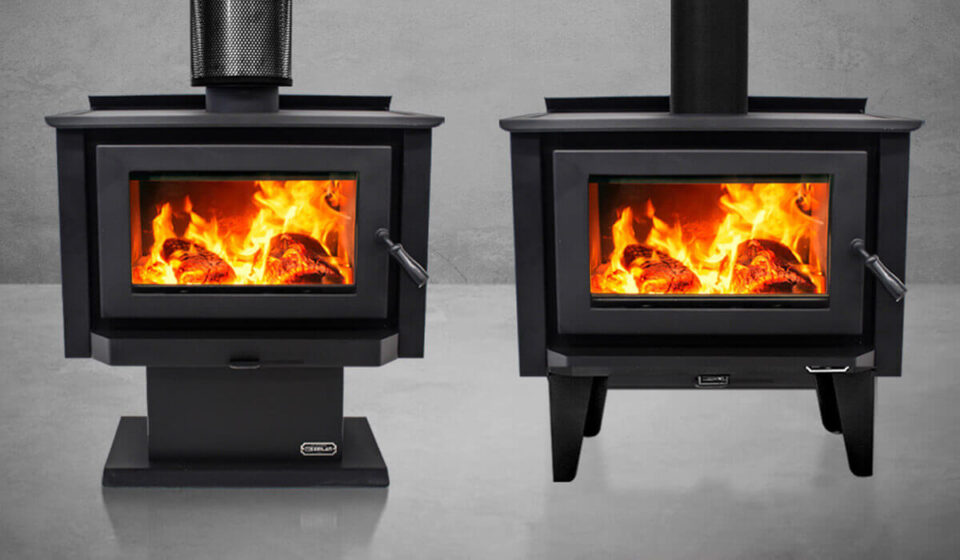Wood fires are romantic, cozy, and warm. Some homeowners may want nothing but a wood fire in their living room for cold Melbourne nights. But some are on the fence, torn between the charm of a traditional wood heater versus a gas log fire to warm their home. Others worry about the environmental damages of burning wood. But they can’t let go of the image of a real fire versus the special effects of an electric furnace.
With the availability of a huge variety of wood heaters in Melbourne stores, it’s hard to choose. Taking a look at four great benefits of wood fires is a start to making up your mind.
You Can Save On Utility Bills
Table of Contents
The AEMC (Australian Energy Market Commission) reports Melbourne homeowners to spend $1,132 a year on electricity. Since wood fires don’t need electricity, imagine all the savings you’ll be making on your electricity bill switching from an electric heater to a wood fire.
Electricity is not cheap, and the cost goes up every year. A wood fireplace in your Melbourne home can help you save a big chunk of your utility bill. You can buy a tonne of firewood for around $300 to $400. That’s enough firewood to take you through three cold winter months as long as you don’t keep your heating on all day, every day.
If you chop your wood (making sure to replant for every tree you chop down) your winter heating will be practically free. Of course, you must make sure you’re only getting your wood from the designated domestic firewood collection areas for Victoria.
How much wood you need will also depend on the size of the space. But generally, though not as cheap as gas, firewood is cheaper than electricity. If you’re buying firewood, always make sure to buy hardwood timber that’s been seasoned and has less than 18% moisture.
You Enjoy Efficient And High-Quality Heating
Modern wood fireplaces in Melbourne are far more efficient than the furnaces of the past. They are great for heating large spaces. Wood fires can burn eight times hotter than gas fires, which are better for space heating.
Most wood heaters operate on the principle of radiant heat. Radiant heat doesn’t need air or any other medium to travel through your space and heat it. In other words, a wood fire isn’t offering comfort by raising air temperature but by heating objects. It has a similar effect to the heat of the sun. On a winter’s day, the sun on your back feels warm, even though the air is cold. A radiant wood furnace has the same effect.
Since a radiant heater heats objects, the heat stays close to the floor. It’s good for homes that are poorly insulated or large. If your home has high ceilings, you’ll want a radiant heater.
Convection wood heaters, on the other hand, warm the air. They draw cool air into the room, heat it, and send the lighter, hot air up. In this way, all of the air in the room heats up. Because of the way they work, convection wood heaters need a well-insulated room with a low ceiling to function efficiently, without wasting heat.
Another perk of a wood fire is it smells (and sounds) delicious if you have a taste for it. For many, the crackle of wood burning may bring back nostalgia and other comforting feelings.
It can’t be denied that some heat is lost from a wood fire that doesn’t go towards heating your living room. But due to design improvements in recent years, efficiencies are a lot higher than they used to be. In the past, only 20% of a wood fire would be converted to heat energy. These days, the numbers cross 60% in better models.
Bring Classic Or Modern Designs To Match Your Home
Wood-burning furnaces also come in a variety of styles these days. Whether you live in a traditional country home or a modern apartment, you’re sure to find a design to fit your aesthetic.
Freestanding cast iron wood heaters in metallic black finishes with ashpans for convenient cleaning can lend rustic charm to your living space. Potbelly stoves with flue kits can bring elegance and warmth. You may also be able to boil water or cook on the potbelly stovetop.
Lower Fossil Fuel Use
Wood-fire heaters can also contribute to lower fossil fuel burning. If you think about it, wood is a renewable resource (as long as trees are being planted at the same rate they are being cut down.) Fossil fuels are limited. Burning wood turns out to be better for the environment in the end.
A question on your mind may be: is a wood fire bad for the environment?
The short answer is: it depends. One of the things that can make wood fires bad for the air quality in your house is particle emissions. Without proper ventilation in your home or regular cleaning of the furnace, the pollutants in the air go up. It is thus important to look for a furnace that makes cleaning easier.
Also, in many newer models of wood fireplaces, emissions are down to under 2 grams/kg. One way of ensuring you’re using the right heater is to see if it’s been passed by the AS4013. This is the Australian Standard for domestic solid fuel-burning appliances, which controls the quality of domestic freestanding wood fires.
You’ll want to minimise smoke by using the right kind of wood. Use dry wood cut into small logs. The lower surface area will keep the fire burning hot and steady. When the wood burns with proper ventilation, it will release less smoke.
Some woods that are good for your furnace are bush gum, red gum, and other seasoned hardwoods. You want to stay away from softwoods like pine and greenwood. Softwood can reduce the draw of the heater by choking up the flue with excess particulate matter. Of course, you also don’t want to burn painted wood or wood that’s been treated, for the danger of releasing toxic chemicals into the air.
The Bottomline
A wood heater is an excellent addition to a contemporary or traditional home in Melbourne. It’s an excellent alternative to a built-in fireplace and comes at an affordable price. Running costs of wood heaters also tend to be on the lower side when compared with electricity. Plus, a wood fire can dry your laundry to a delicious, warm crispness!
These are all good reasons to get yourself a freestanding wood furnace in the coming winter. As long as you service your wood heater once a season like you’d service your car, you can make it live longer and keep running efficiently.
A final word on usage: whether or not you can burn the heater overnight will depend on the type of wood heater. You want to make sure there’s enough oxygen available for the wood as it burns, or else burning will produce carbon monoxide. Larger furnaces and those with enough inlets for air will let you keep your heater on all night so you enjoy a cozy night of sleep.

